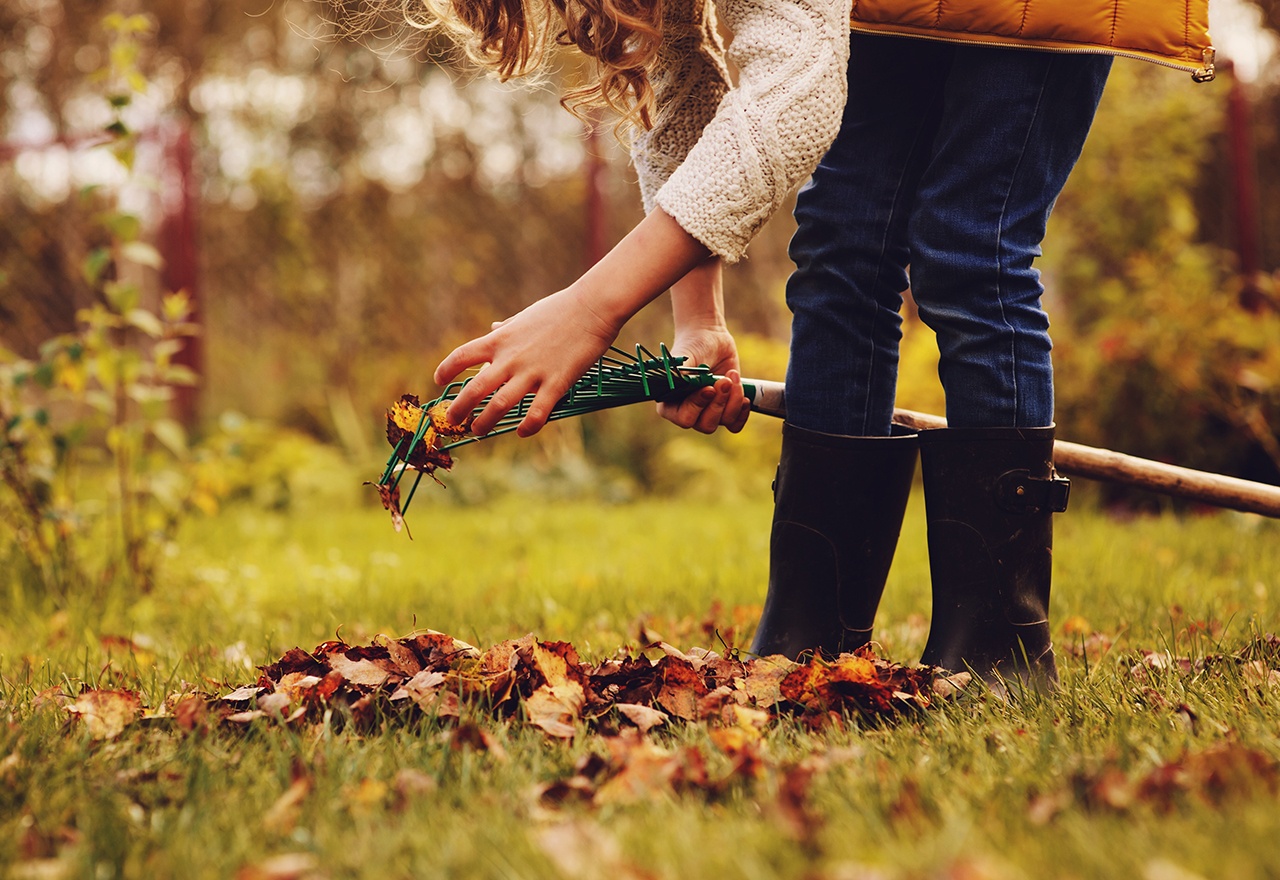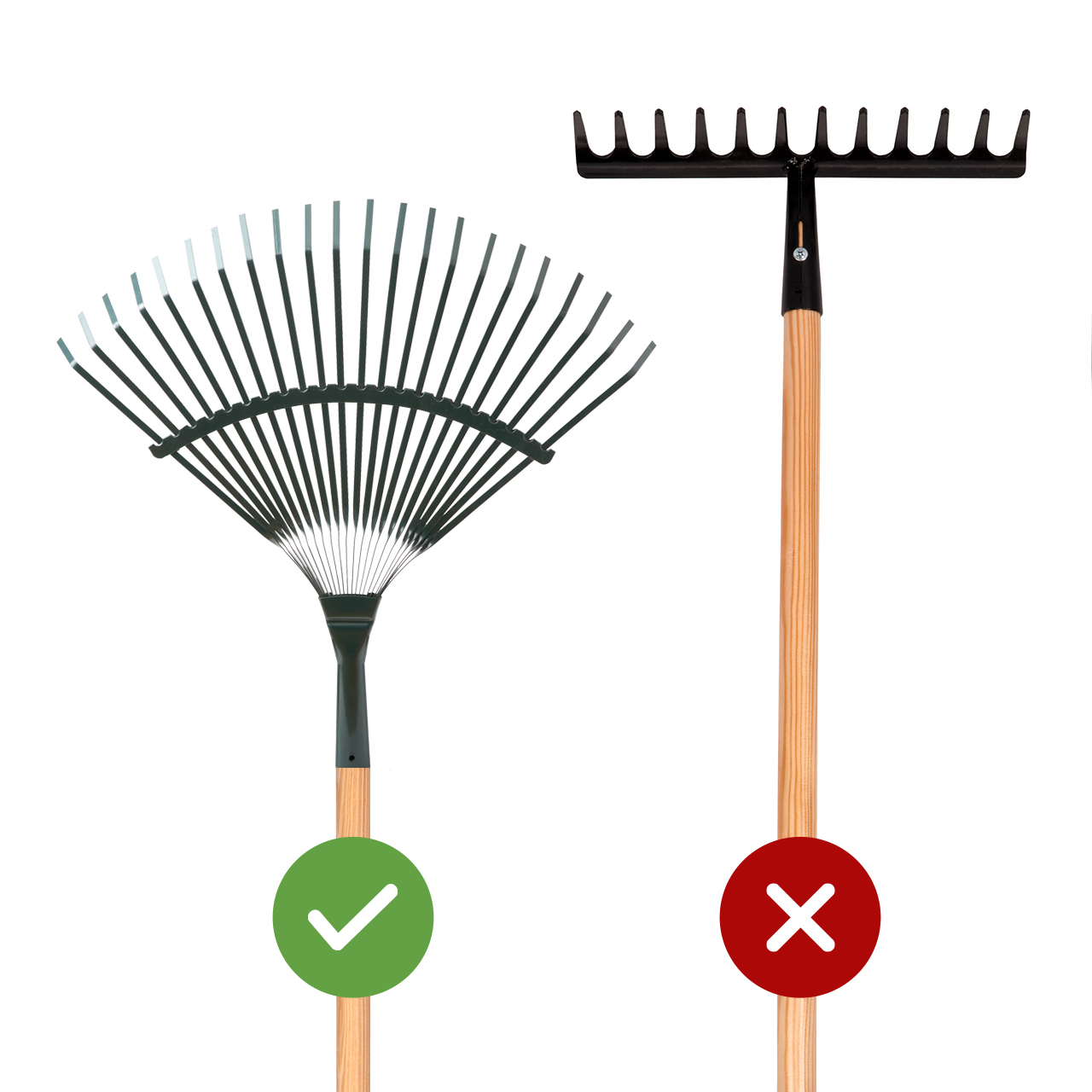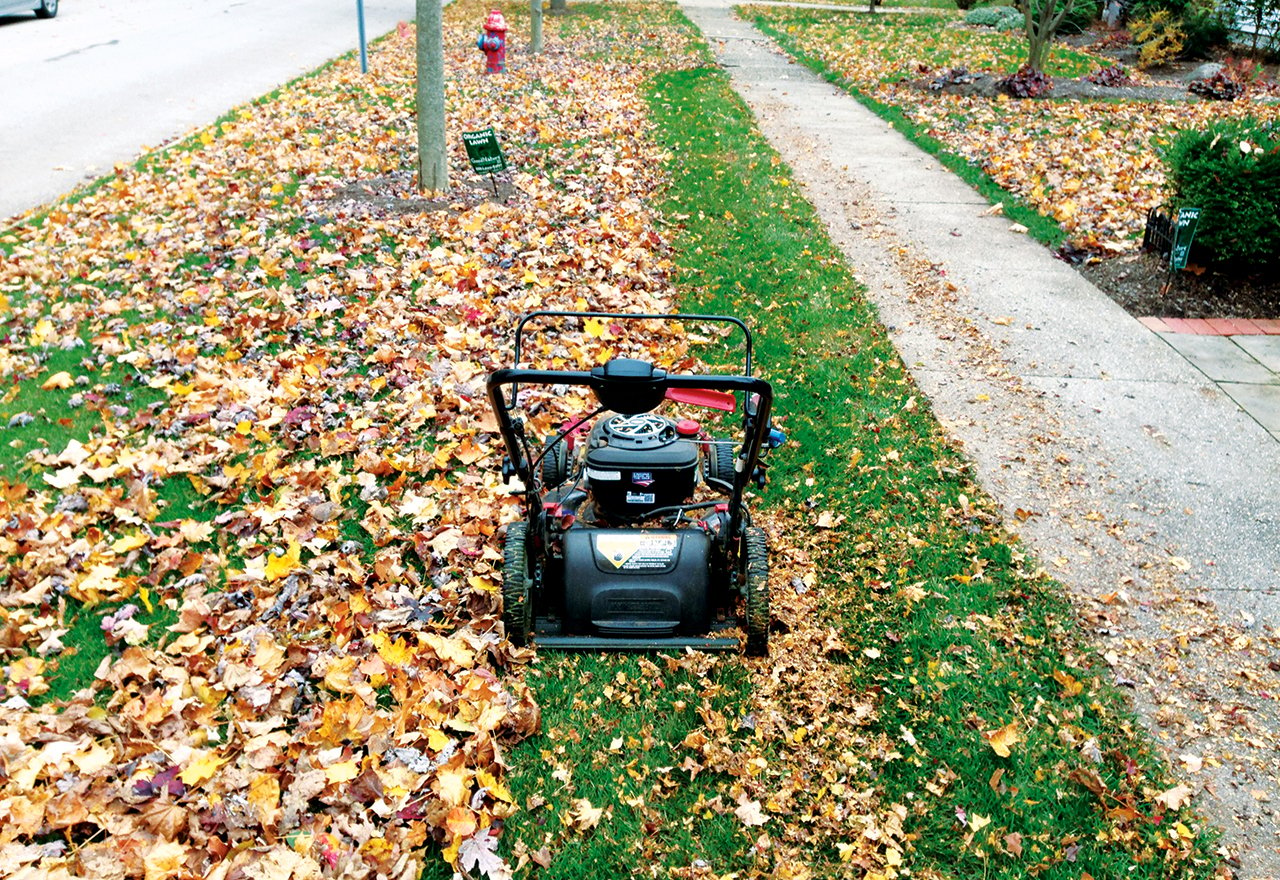You Can Mulch Your Leaves with Your Mower for Free Lawn Compost

Each Autumn, our deciduous leaves fall from the tree tops onto the ground. In a forest setting, the leaves break down and make humus, the basis of new soil. A blanket of leaves also makes good habitats for forest-dwelling animals, such as frogs and squirrels, to make a Winter hibernation nest, as well as insects and pollinators, like bees and butterflies.
However, heavy leaves left on a lawn can be a problem and require action. When leaf cover is thick, they can smother the grass and kill it over the Winter. Thick leaves can also cause Snow Mold Disease over the cold season.
According to the University of Minnesota Extension, 10 to 20% coverage of leaves on your lawn is fine and does not need to be managed. However, if you have many trees in your yard, you are likely to have more than 20% of your lawn covered with leaves. Sure, you could rake or blow them into piles, move the piles of leaves to the curb and let your municipality haul them away to compost. But why not compost them yourself? By composting your leaves in place, you can feed your soil, your lawn and your gardens.
We recommend not raking leaves to all of our organic lawn care customers. You read that right – don’t rake your leaves! Instead, mulch them with your mower.
To mulch your leaves, you just need to raise your mower blade and mow over the leaves on your lawn. Don’t worry if they’re wet or thick. The leaves might clump up, just mow over them again or raise the front wheels of your mower as you move over them. This practice will chop up the leaves into small pieces that will fall between the grass blades. There, microbes will break the leaf bits down and the leaves will feed the soil, adding nutrients and making your lawn healthier.

If you have a lot of leaves, we recommend giving the grass a light raking after the leaves are mulched to fluff up the grass and help the leaf bits get between the blades. When choosing a rake, use a fan-shaped leaf rake, as opposed to a garden rake, to properly disperse the newly mulched leaves, without harming the lawn. This might not be necessary if you don’t have many leaves. You will probably need to mulch your leaves by mowing a few times over the Autumn season as more leaves fall to the ground, sometimes weekly. By the way, this is a great time to apply an organic fertilizer after mulching.
In addition to mulching your leaves, we recommend collecting some of them and covering both flower and vegetable gardens. This Wintertime blanket will protect early Spring growth and will add nutrients to your garden soil. A three to six-inch layer is all the thicker you want to go. The layer of leaves may also become a Winter home to some frogs or butterflies, so don’t move the leaves until late Spring when these animals have finished their Winter naps.
Studies from the University of Michigan show that homeowners have fewer weeds, quicker Spring green-up and healthier grass after mulching their leaves versus hauling them away. Some lawns have seen a complete elimination of dandelions and crabgrass after a few years of mulching practice.
Consider fallen leaves a resource for your lawn and garden, instead of a chore.
